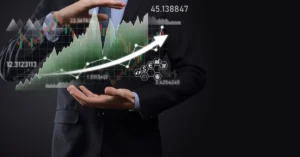If you’re looking up the word “popcornmovies,” chances are you’re not searching for film theory essays or niche arthouse titles. You’re seeking something immediate—fun, digestible, thrilling. Popcornmovies are cinematic roller coasters. They’re not designed to change your life; they’re designed to let you forget it for two hours. And that, in itself, is an art form.
In the digital age of streaming saturation and algorithm-driven recommendations, the term “popcornmovies” has become shorthand for big-budget, high-energy films designed primarily to entertain. They aren’t limited by genre—though action, science fiction, and comedy are frequent occupants of the category—and they don’t pretend to be “serious cinema.” What they offer instead is something just as culturally essential: communal spectacle, pure escapism, and a shared emotional exhale.
But what exactly defines a popcorn movie? Is it a marketing term, a fan creation, or a dismissive label? This article explores the roots, evolution, and significance of popcornmovies—from summer blockbusters to streaming-era binge content—and why they remain at the heart of our global moviegoing experience.
What Are PopcornMovies, Exactly?
The term “popcorn movie” isn’t found in formal film studies syllabi, yet it’s one of the most recognizable in pop culture.
Popcornmovies refer to films made primarily for entertainment rather than critical acclaim. They are meant to be fun, fast-paced, and accessible, often filled with explosions, laughs, romantic beats, or larger-than-life characters.
While often contrasted with “prestige cinema” or “art films,” popcornmovies serve a different function. They:
- Deliver adrenaline, spectacle, or laughs over subtlety
- Aim for mass appeal rather than niche interpretation
- Prioritize visual storytelling over subtext
- Are built for box office, not festival circuits
Think of Marvel films, disaster flicks, romantic comedies, or heist films. These are films that pair well with popcorn—hence the name. The goal is simple: to entertain. And in a media environment crowded with complexity, that simplicity is surprisingly rare and valuable.
The Historical Roots of PopcornMovies
The history of popcornmovies runs parallel to the evolution of Hollywood itself.
The Birth of the Blockbuster (1970s)
The modern popcorn movie traces back to 1975’s Jaws and 1977’s Star Wars. These films weren’t just commercial hits—they were events. Lines around the block. Repeat viewings. Merchandise flying off shelves. And crucially, they redefined summer as a movie season, creating a market for big, effects-driven films meant to thrill large crowds.
The ’80s and the Rise of the Franchise
The 1980s gave birth to the action-comedy hybrid, with films like Indiana Jones, Ghostbusters, and Back to the Future. These weren’t just popcornmovies; they were cultural phenomena, spawning sequels, cartoons, toys, and theme park rides. Studios realized the value of not just individual films but franchises.
The CGI Era and Globalization (1990s–2000s)
With Jurassic Park (1993), the industry embraced digital spectacle. The rise of multiplexes and international distribution allowed films to recoup budgets through global markets. Titanic, The Matrix, Harry Potter, Pirates of the Caribbean—each was a popcorn movie elevated by technical innovation and cross-market appeal.
The Marvelification of the Popcorn Template (2010s–Present)
No franchise has more clearly defined modern popcornmovies than the Marvel Cinematic Universe. These films mastered the formula: charismatic leads, fast pacing, connected universes, and tonal balance between drama and humor.
But Marvel didn’t invent the popcorn movie. They simply refined it to industrial precision.
Key Elements That Define a Popcorn Movie
Popcornmovies are not a genre; they’re a style and intent. You’ll find them in superhero movies, thrillers, rom-coms, and fantasy epics. But they share common traits:
1. High Entertainment Value
Whether through action, comedy, romance, or fantasy, the film is designed to be enjoyable on first watch—no background in cinema required.
2. Visual Spectacle
Popcornmovies are often built for the big screen: car chases, visual effects, sweeping landscapes, or dynamic camera work that engages the senses.
3. Simple, Relatable Themes
Family, friendship, revenge, love, justice—themes are broad and emotionally universal. Popcornmovies don’t assume you’ve studied film history.
4. Clear Good vs. Evil Dynamics
Nuance exists but is often secondary to clearly defined stakes. Villains are typically villainous. Heroes are flawed but admirable.
5. Quotable Dialogue and Iconic Scenes
Catchphrases, epic moments, or memorable character entrances are standard. Popcornmovies aim to be re-watchable and culturally sticky.
The Cultural Value of PopcornMovies
There’s a tendency to dismiss popcornmovies as low art, especially among critics. But that overlooks their immense social, psychological, and even political value.
– Escapism as Emotional Relief
In chaotic times, entertainment matters. Popcornmovies provide a necessary reprieve. They remind us what it feels like to laugh, cheer, or gasp alongside strangers.
– Shared Cultural Language
Popcornmovies create shared touchpoints across cultures and generations. Whether it’s Avengers: Endgame or Titanic, they give us universal reference points in a fragmented media world.
– Economic Engine of the Film Industry
These films fund studios, subsidize indie divisions, and employ thousands. Their financial success allows room for riskier, more experimental projects elsewhere.
– Innovation Drivers
Popcornmovies often push technical boundaries in cinematography, special effects, and sound design, innovations that trickle into smaller productions.
The Streaming Era: PopcornMovies at Home
While the term “popcorn movie” evokes theaters, the rise of streaming platforms has reshaped distribution.
- Netflix, Prime Video, and Disney+ have all funded big-budget films like Red Notice, Extraction, and The Gray Man—made for home viewing, but in the popcorn mold.
- Audiences now expect blockbuster-caliber entertainment without leaving the couch, blurring the line between theatrical and digital cinema.
Yes—because it’s the intent and energy that defines the experience, not the medium.
Notable Examples of PopcornMovies by Decade
1970s
- Jaws
- Star Wars: A New Hope
- Close Encounters of the Third Kind
1980s
- Indiana Jones
- Die Hard
- Ghostbusters
1990s
- Jurassic Park
- Independence Day
- The Mummy
2000s
- The Dark Knight
- Pirates of the Caribbean
- Spider-Man 2
2010s
- Avengers: Infinity War
- Guardians of the Galaxy
- Fast Five
2020s (So Far)
- Top Gun: Maverick
- The Batman
- Avatar: The Way of Water
The Critic vs. The Crowd: Debating Popcorn Cinema
It’s a familiar story: Critics scoff, audiences cheer. Transformers movies get panned but rake in millions. Fast & Furious defies logic—and gravity—but fans love it.
Why the divide?
- Critics often prioritize originality, subtext, and formal innovation.
- Audiences prioritize connection, pace, and enjoyment.
Yet some films transcend both camps: Mad Max: Fury Road and Inception are praised as both popcorn and prestige.
The best popcornmovies don’t abandon craft—they reframe it for mass engagement.
The Future of PopcornMovies
As the entertainment landscape evolves, so too will the popcorn movie. Here’s what’s next:
– AI and Virtual Production
Tools like Unreal Engine and AI-assisted scripting may make popcornmovies faster and cheaper to produce—potentially enabling global participation.
– Non-Western PopcornMovies
India’s RRR, Korea’s Train to Busan, and China’s The Wandering Earth show how global markets are creating their own blockbusters.
– Inclusive Heroes
Expect more diverse leads, stories, and perspectives. Popcornmovies are no longer just for one demographic—they’re for everyone.
– Immersive Formats
With the rise of AR/VR, the popcorn movie may soon be experienced as much as viewed.
Conclusion
Popcornmovies may not be designed to win Oscars, but they win something more powerful: the audience’s trust. Year after year, amid critical debates and cultural shifts, they continue to draw people in—into theaters, into stories, into communal emotion.
Far from being mindless or shallow, they reveal what people want to feel when they press play: wonder, relief, adrenaline, laughter. In a media world that often feels fragmented and divided, popcornmovies are a rare unifier—a universal invitation to suspend disbelief and enjoy the ride.
FAQs
1. What exactly qualifies a movie as a “popcorn movie”?
A popcorn movie is a film made primarily for entertainment. It emphasizes action, comedy, or spectacle, and is designed for wide audience appeal rather than critical analysis.
2. Are popcornmovies only action or superhero films?
No. While many popcornmovies fall into action or superhero genres, others include comedies, romantic films, or even disaster movies—as long as they’re fast-paced and accessible.
3. Are popcornmovies and blockbusters the same thing?
Often, but not always. Blockbusters are defined by box-office success. Popcornmovies may or may not be commercial hits but share the goal of entertaining broadly.
4. Can a popcorn movie be critically acclaimed?
Yes. Films like Mad Max: Fury Road and The Dark Knight are both popcorn and critically respected. The two aren’t mutually exclusive.
5. Where can I watch the latest popcornmovies?
Popcornmovies are available in theaters, on streaming platforms like Netflix and Disney+, and increasingly on direct-to-digital releases via services like Amazon Prime Video.
For more information, click here.









